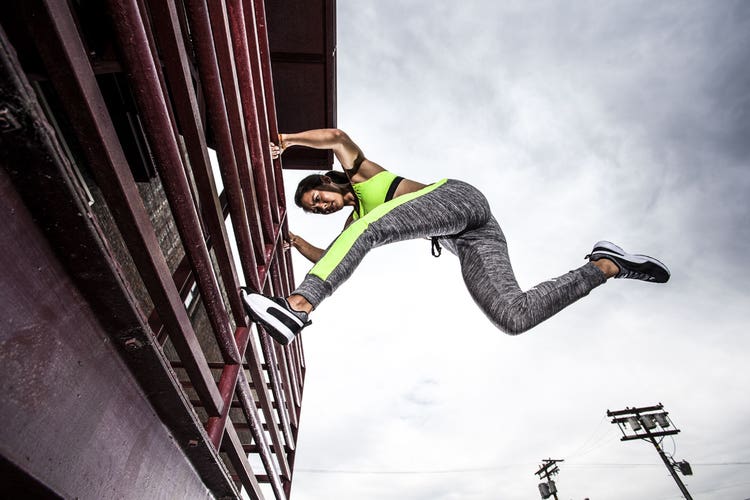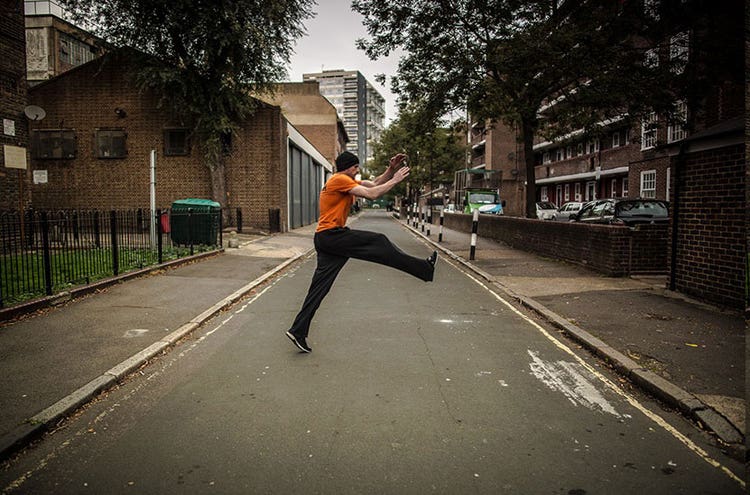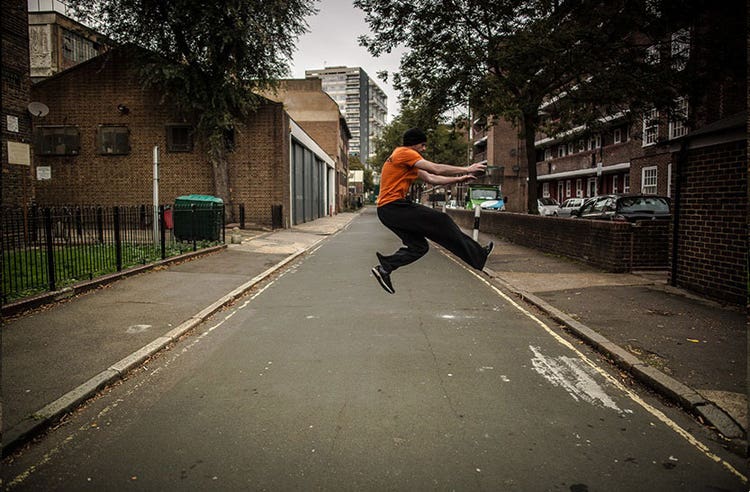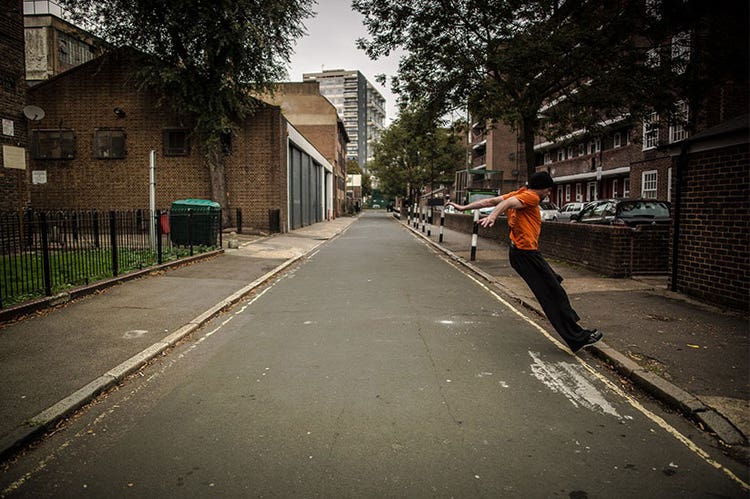Jump Right In

Learn to do a running jump and sail right over—or into—anything.
Long-distance or built for speed? Persistence hunters or occasional sprinters? Barefoot or shod? Long or short stride patterns? The debates around running and its place in human history and science have raged for years now, with scientific evidence available to support conflicting viewpoints.
Whatever you believe, it’s clear that we’re pretty good at running as a species, and that it’s been used for locomotion, practical necessity, working out or just for pure enjoyment for as long as we can remember. It’s survived the test of time and it’s not going anywhere. Hundreds of millions of people worldwide run every single day of their lives for fitness, training or fun.

At Parkour Generations we believe running should be a pleasure. It should be effortless, light and invigorating—not a plodding, lung-bursting chore. We recommend limiting the amount of regular long distance you do on hard surfaces (whether minimalist or shod) to perhaps one or two runs per week, and intersperse this with a couple of short, intensive sessions of sprint training. As with all things, variability of movement leads to health. Vary the terrain, vary the distances, vary the speed. Trail running trumps road running.
And simple heuristics are often best: If it hurts your joints, stop; make sure you can hold a conversation when going for distance, so that you’re not exceeding your aerobic capacity; sprint barefoot to increase power and range of motion in the joints of the foot. Most of all, keep it lighthearted and fun! Training should be a pleasure, not a battle.
Running is a wonderful thing, and a privilege for those of us who can step out of our doors at any time and just hit the road. Don’t take it for granted—get out there and get moving!
MOVEMENT OF THE MONTH: Running Jump

The standard running jump is most commonly used to cross gaps or obstacles that are not suitable for moving on, or sometimes simply to hurdle an obstacle in your path or to jump directly onto an object higher than ground level, in order to move along it.
Whatever the use, the principle is always the same. The run-up should use measured and consistent strides; it should be fluid, light and dynamic and a natural gait. You will undoubtedly begin by having a preferred leg to jump from—but it is a basic training principle in parkour to train both sides equally. So, when you are drilling jumps, remember to alternate which leg you are taking off with, if possible. This way, both legs will develop good power and control, making you an all-around better athlete.
To develop a good running jump, find a jump just within your maximum range and repeat it on each leg until you are comfortable with it. Then increase the distance. Think roughly in terms of sets of ten jumps, maybe doing just two or three sets to begin with. This will take a lot out of your legs, so if you feel sore and tired the next day, rest and let your muscles recover and rebuild.

Key Points: Always imagine you are jumping over a shin-high obstacle when you jump—this will ensure better form, as you have to drive upwards as well as forwards and pick your knees up as you go, allowing you to come down on your landing spot with the balls of the feet and a better trajectory. Use the arms to swing and help power the movement. Relax and let the jump happen naturally. After all, you’re born to jump!
Photo credits: (hero) Tom Casey, box24studio.com; Andy Pearson & Parkour Generations